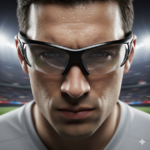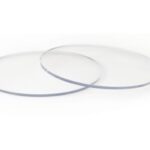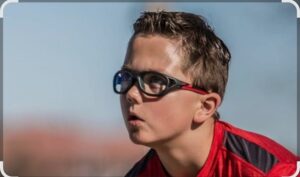Sports vision as the science of helping athletes reach peak levels of performance through the enhancement of visual skills. A growing body of evidence confirms that visual abilities can be strengthened and enhanced by means of appropriate visual training.
Vision is not only about how well you can see, it also involves 17 different visual skills that enable accurate, smooth, and precise eye movements for clear and comfortable vision, as all necessary for many daily activities. These visual skills allow you to visualize, use your peripheral vision, switch visual focus between target points at varying distances, sustain focus on a moving target.
In other words, a vision problem may actually be causing the difficulty you are experiencing while participating in sports activities.
Common signs of vision problem impacting sports performance
The following signs are:
- Aversion to team sports
- Diminished interest in sport
- Difficulty catching or throwing
- Inability to see the ball clearly
- Struggling to track the ball or other players
- Over or under estimating distances
- Poor sports performance even with strong athletic skills
- Improvement is not noticed even with practice
- Trouble remembering plays
With the sport visual training, it is intended to improve the visual abilities of athletes and consequently their sports performance.
In general terms, “an improved vision” can raise income levels during the sports process, in any case it is necessary to bear in mind what this vision is, since depending on the sport so the skills needed for its performance to the highest Level.
Tips for Examining and Prescribing Athletes
The following tips are:
- When examining an athlete, it’s important to appreciate the visual demands of their sport and ask questions about the protective equipment that they wear.
- Athletes should be refracted to the 20/10 line on a high contrast chart.
- For athletes with refractive error, contact lenses are usually preferred because spectacles will move around and there will be prismatic distortion in the periphery.
- For athletes that play water sports, daily contact lenses are the best choice. The daily contact lens can be discarded after being worn in the water to reduce the risk of infection. It’s important to teach your client how to locate and remove a dislodged contact lens, especially if they are involved in high impact sports. For swimmers, you could always suggest prescription swim goggles if their prescription is available.
- For athletes that would prefer LASIK refractive surgery, there is a small risk of flap tears in high impact sports. You should have a discussion about protective eyewear for all athletes in high impact sports.
Athletic Performance may suffer if the vision system does not receive the message correctly or quickly enough. It is important for the visual system to function at a high level because athletic performance is one of the most demanding activities for the visual system. Vision is much more than seeing clearly, it is interconnected visual skills which affects performance.
Reduced visual skills will make it difficult to participate in sports activities and team sports— and may even lead to a poor self-image or self-esteem.
The following skills are essential for optimal sports performance:
- Dynamic visual acuity
Dynamic visual acuity allows you to see moving objects clearly. This skill is essential for sports such as tennis, racquetball, hockey, or soccer for the ability to clearly see the ball and other players while you and/or the other objects are moving quickly.
- Eye tracking
Eye tracking allows you to keep your eyes on the ball at all times, without moving your head, enabling the ability to maintain better balance and a faster response to the situation. This skill is essential for any fast moving sport, or any type of game played with a ball.
- Eye focusing
Eye focusing allows you to change focus quickly and accurately between two distances (near and far). This skill is essential for playing all types of sports that involve looking at the goal in the distance, while managing and moving around the opponents up-close.
- Peripheral vision
Peripheral vision allows you to see images and objects such as a teammate or opponent, “out of the corner of your eye” while fixating on a target. This skill is essential for all sports, for the ability to see what is going on all around you without having to turn your head.
- Depth perception
Depth perception allows you to quickly and accurately judge the speed and distance of objects. This skill is essential for estimating the location of the ball, teammates, opponents, boundary lines, goals, and other objects.
- Visual reaction time
Visual reaction time allows you to interpret and react to your teammate’s or opponent’s action, in an appropriately timed manner. This skill is essential for swinging a bat, catching a ball, or returning a tennis serve.
- Eye-hand coordination
Eye-hand coordination allows you to react to incoming visual information with accurate body movements. This skill is essential for sports because it enables accurate timing and control over body movements, such as when swinging a bat, taking a shot, and shooting hoops.
- Visual memory
Visual memory allows you to interpret and remember a fast-moving, multi-detailed image, including both people and objects. This skill is essential for sports, specifically for “being in the right place, at the right time”, enabling you to remember the location of your teammates and opponents as you try to remain in control of the ball.
- Visualization
Visualization allows you to imagine yourself succeeding, while at the same time concentrating on something else. This skill is essential for sports as it enables you to visualize yourself shooting the ball into the hoop, or hitting the perfect serve, while concentrating on the ball, imagining the success of your action facilitates the actual success. According to research, the areas of the brain that light up during performance, also light up when a person visualizes the performance.
- Visual concentration
Visual concentration allows you to maintain focus on an object or target, with the presence of distracting factors in your field of vision. This skill is essential for sports, specifically in situations when spectators are reacting or cheering around you, if an object is thrown on the court, or the timer on the scoreboard is approaching the end of the period.
Can vision therapy improve visual skills for sports?
Most binocular vision conditions are caused by problems within the eye-brain connections, or the way that the brain processes the visual information coming in through the eyes also known as visual processing. If a vision problem is detected, a program of vision therapy will help to retrain your visual system, to improve your vision skills.
Vision therapy can be defined as the science of achieving clear and comfortable vision.
Vision therapy is a fully customized treatment program designed to improve and strengthen the visual skills, and re-train the eye-brain connections to interpret visual input with increased accuracy and ease.
The aim of vision therapy is to enhance the visual skills such as eye-tracking, focusing, eye-hand coordination, peripheral vision, visual processing speed and more.
Vision therapy is conducted once per week by optometrists, with each session lasting 30-45 minutes. Each program is designed for the specific needs of each patient, and involves a variety of eye exercises and activities to strengthen the visual skills. In addition to in-office sessions, homework is given to reinforce what the skills learned during each session.
Necessity of awareness about sports vision
It is necessary for athletes without any vision problems, improving visual performance, such as increasing dynamic visual acuity, decreasing reaction times and improving eye-hand coordination is an integral component to improving overall performance.
As sports become more competitive, it is necessary to enhance visual skills for better performance. Although there are many therapies which can help to improve visual performance, it is important that all athletes regularly see an eye doctor to properly assess and manage their vision performance as well as their eye health.










